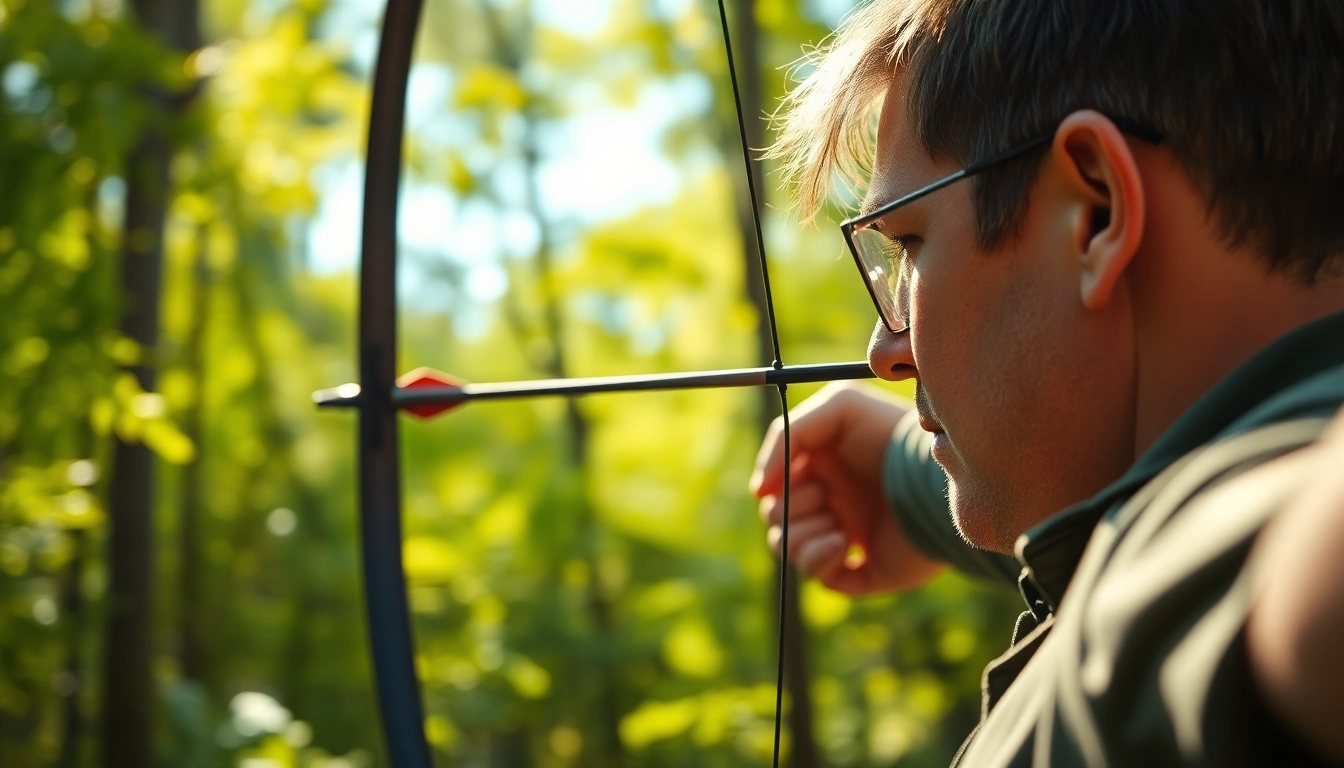Understanding Arrow Speed
What is Arrow Speed?
Arrow speed refers to the velocity at which an arrow travels once it has been shot from a bow. Measured typically in feet per second (fps), arrow speed can greatly influence the effectiveness of archery, whether for hunting or sport. Faster arrows tend to feature more precision and flatter trajectories, allowing for improved accuracy at longer distances. Understanding arrow speed is crucial for archers who seek to optimize their performance and enhance their overall shooting experience.
Factors Influencing Arrow Speed
Several key factors can affect the speed of an arrow. Among these, the most significant include:
- Bow Draw Weight: The force required to draw the bowstring back plays a crucial role in speed. A higher draw weight often results in increased arrow speed.
- Arrow Weight: Heavier arrows generally experience lower speed due to increased mass. Conversely, lighter arrows may achieve higher speeds but could lose kinetic energy upon impact.
- Bow Type: Different types of bows, such as compound, recurve, or crossbow, possess varied mechanisms that influence how effectively energy is transferred to the arrow.
- Arrow Length: The length of the arrow can also play a role, as it affects the weight and balance, thus impacting speed.
- Broadhead Weight: The type and weight of the broadhead affixed to the arrow can affect its aerodynamics and speed.
The Importance of Accurate Measurements
Accuracy in measuring arrow speed is fundamental to optimizing archery performance. Miscalculations can lead to incorrect adjustments in shooting techniques or equipment choice. Utilizing an Arrow Speed Calculator is an excellent approach to ensure that the speed calculated mirrors actual performance. Accurate readings facilitate better tuning of gear and individualized adjustments, dramatically enhancing the archer’s success rate.
How to Use the Arrow Speed Calculator
Input Parameters Explained
To effectively utilize an arrow speed calculator, it’s essential to understand the input parameters. Common inputs typically include:
- Bow Draw Weight: The weight in pounds you need to pull back the bowstring.
- Arrow Weight: Measured in grains, this detail is critical, as it helps determine how responsive your arrow is when launched.
- Broadhead Weight: The measurement of the weight of the broadhead that will be attached to the arrow.
- Let-off Percentage: Mainly applicable to compound bows, this percentage indicates the reduction in draw weight at full draw.
By entering these parameters accurately, users can receive precise speed readings reflective of real-world dynamics.
Common Mistakes to Avoid
While using an arrow speed calculator, certain common mistakes can lead to inaccurate results:
- Incorrect Weight Measurements: Failing to weigh arrows and broadheads accurately can skew results. Always use precise scales.
- Neglecting Bow Specifications: Users sometimes overlook essential bow specifications such as draw weight and let-off percentage.
- Not Considering Atmospheric Conditions: External factors like altitude and temperature can slightly affect speed; being aware of these can enhance accuracy.
Interpreting Your Results
Once you obtain the results from the arrow speed calculator, understanding these figures is essential for practical application. The speed provides insights into necessary adjustments in your shooting technique, choice of gear, or arrow setup. Comparatively, users can benchmark their results against standard speeds for their bow classification or style, helping them gauge their performance. Regularly using speed measurements can aid in determining trends and improvements over time, thus promoting better archery practices.
Enhancing Archery Performance
Benefits of Knowing Your Arrow Speed
Keen knowledge of arrow speed comes with several benefits. Here are a few:
- Improved Accuracy: Faster arrows generally allow for flatter trajectories, enhancing accuracy in aiming at distant targets.
- Better Energy Transfer: Understanding arrow speed can help determine kinetic energy, which is crucial for hunting scenarios, ensuring your arrows deliver enough impact to ethically harvest game.
- Informed Equipment Choices: Knowing your arrow speed helps in selecting appropriate gear and arrows tailored to maximize performance.
Adjusting Setup for Optimal Results
Fine-tuning your equipment holds great significance in achieving optimum arrow speed. Adjustments include:
- Arrow Selection: Experimenting with various arrow weights can yield insights into a combination that offers the best speed and accuracy.
- Broadhead Choice: Consulting with experts or testing various broadheads can lead to selecting one that balances weight, aerodynamics, and cutting efficiency.
- Bow Tuning: Regular bow tuning and maintenance ensure that draw weights and mechanisms are functioning optimally, contributing to the bow’s overall efficiency.
Real-world Applications of Speed Data
Arrow speed data can make a stark difference in real-world archery applications. Consider the following scenarios:
- Hunting: Knowledge of the arrow’s speed can help hunters make informed decisions about shot distance and angle, thereby enhancing their chances for successful hunts.
- Competitive Shooting: In competitions, having a superior understanding of speed dynamics elevates an archer’s ability to adapt to varying distances and wind conditions.
- Coaching: For coaches, speed data allows for accurate feedback to athletes, helping them adjust technique effectively for maximum performance.
Comparing Speed Calculators
How Do Different Calculators Work?
Various arrow speed calculators utilize distinct methods to derive speed measurements. Generally, they operate based on fundamental physics principles, factoring in variables such as draw weight and arrow weight. Many calculators also apply formulas pertaining to energy transfer and momentum to produce outcomes that simulate real-world archery conditions. They might differ in complexity and methodology but ultimately aim to provide users with a close approximation of arrow speed.
Pros and Cons of Various Tools
When choosing tools for measuring arrow speed, it’s essential to weigh the pros and cons:
- Online Calculators: Easy to access and quick to use but may lack the precision of detailed, physical measurements.
- Apps: Convenient for on-the-go calculations, often with added features for performance tracking, although some may require registration or purchase.
- Physical Chronographs: Offer the highest accuracy but can be expensive and require more effort to set up compared to digital calculators.
Choosing the Right Calculator for Your Needs
Finding an arrow speed calculator that suits your needs hinges upon your specific archery context. Consider whether you prioritize portability with mobile apps, accuracy with physical devices, or quick measurements with online tools. Ultimately, it’s about balancing convenience with the level of precision required for your archery pursuits. Assessing your archery goals can guide you toward the proper choice.
Advanced Calculations Related to Arrow Dynamics
Estimating Kinetic Energy
Understanding the dynamics of an arrow’s speed goes beyond just measuring velocity; it’s also about calculating kinetic energy, which is pivotal in judging the arrow’s effectiveness. Kinetic energy (KE) can be calculated using the formula: KE = 0.5 * m * v², where m is the mass of the arrow (in kg) and v is the velocity (in m/s). This value gives insights into the arrow’s performance, particularly in hunting scenarios, as higher kinetic energy results in better penetration and impact.
Momentum and Its Role in Archery
Momentum, calculated as the product of mass and velocity, is another critical factor that influences an arrow’s performance. The formula for momentum (p) is p = m * v. In archery, understanding the momentum helps predict how well an arrow will perform on impact. Higher momentum situations are indispensable for archers pursuing large game, ensuring that the arrow delivers an impactful shot necessary for reducing suffering and achieving a swift harvest.
Advanced Physics Behind Arrow Flight
The flight of an arrow is governed by complex physics principles, including aerodynamics, torque, and gravity. An understanding of these principles can significantly enhance shooting performance. Factors to consider include:
- Aerodynamics: The shape and material of the arrow affect drag and stability in flight. Fletching design also alters how an arrow behaves post-release.
- Gravity Effects: Understanding bullet drop and how far an arrow will travel can help in estimating the correct aim point for different distances.
- Archer’s Form and Release: The technique employed during the shot can influence the arrow’s speed, trajectory, and ultimately the accuracy.


